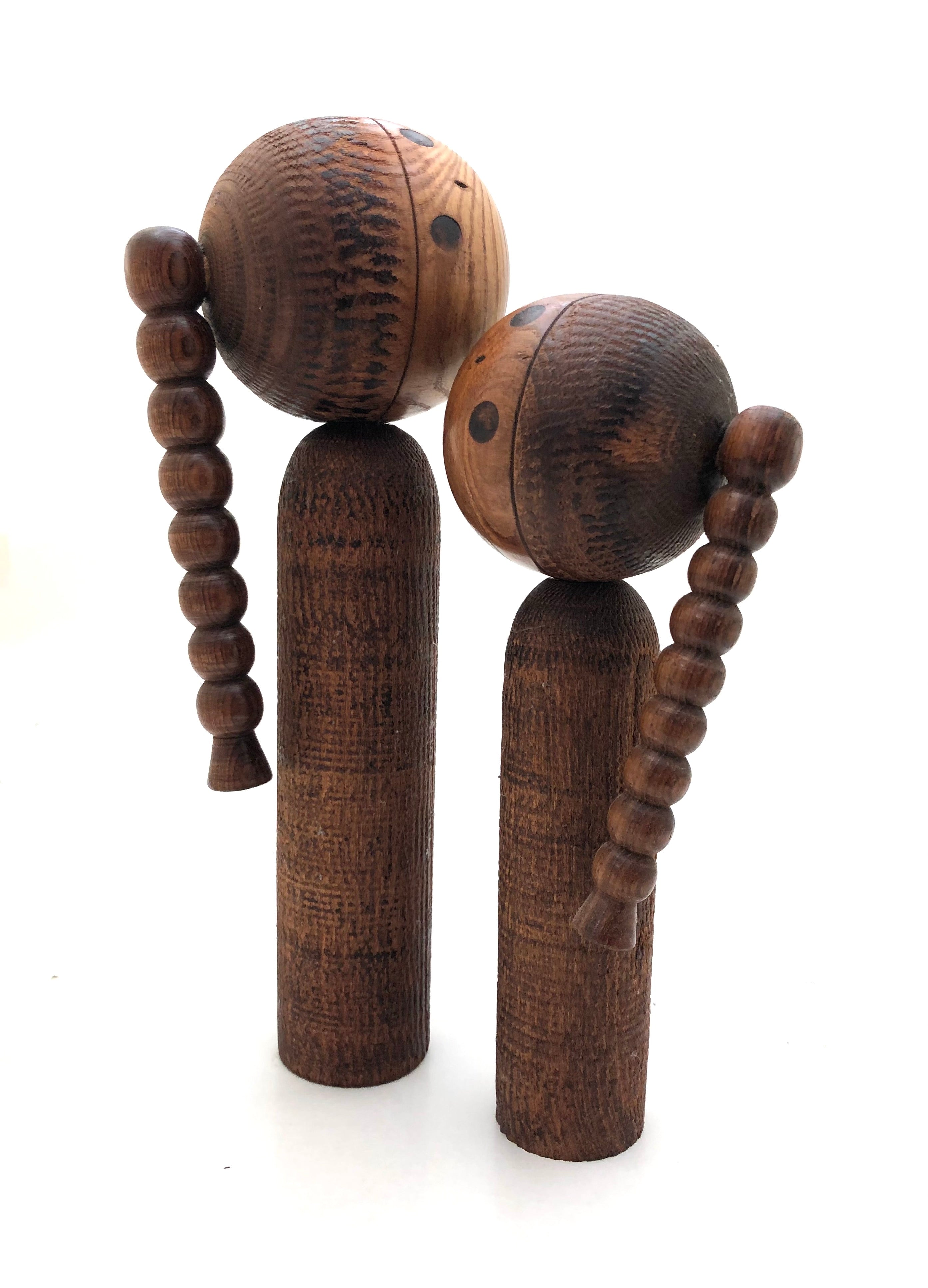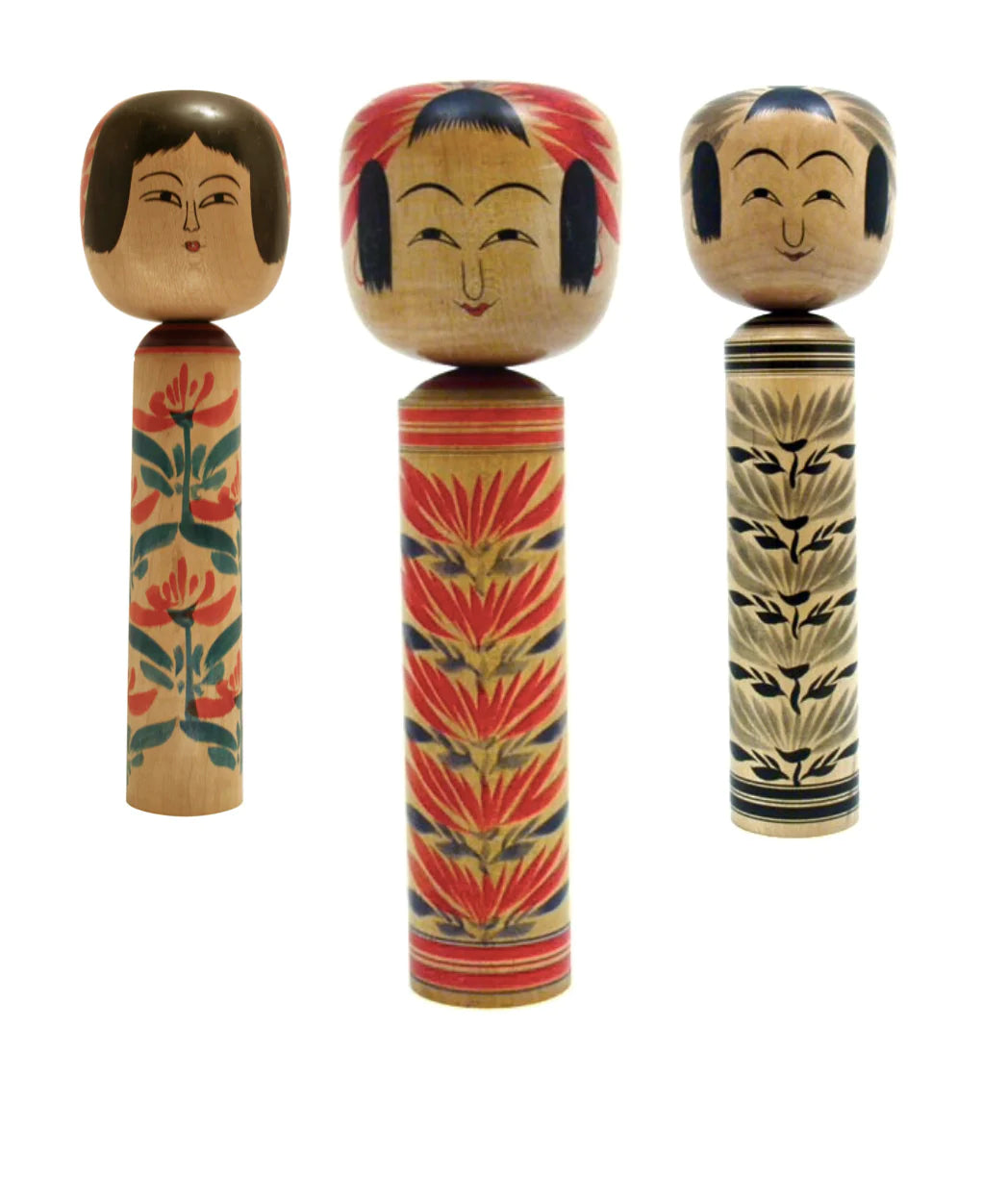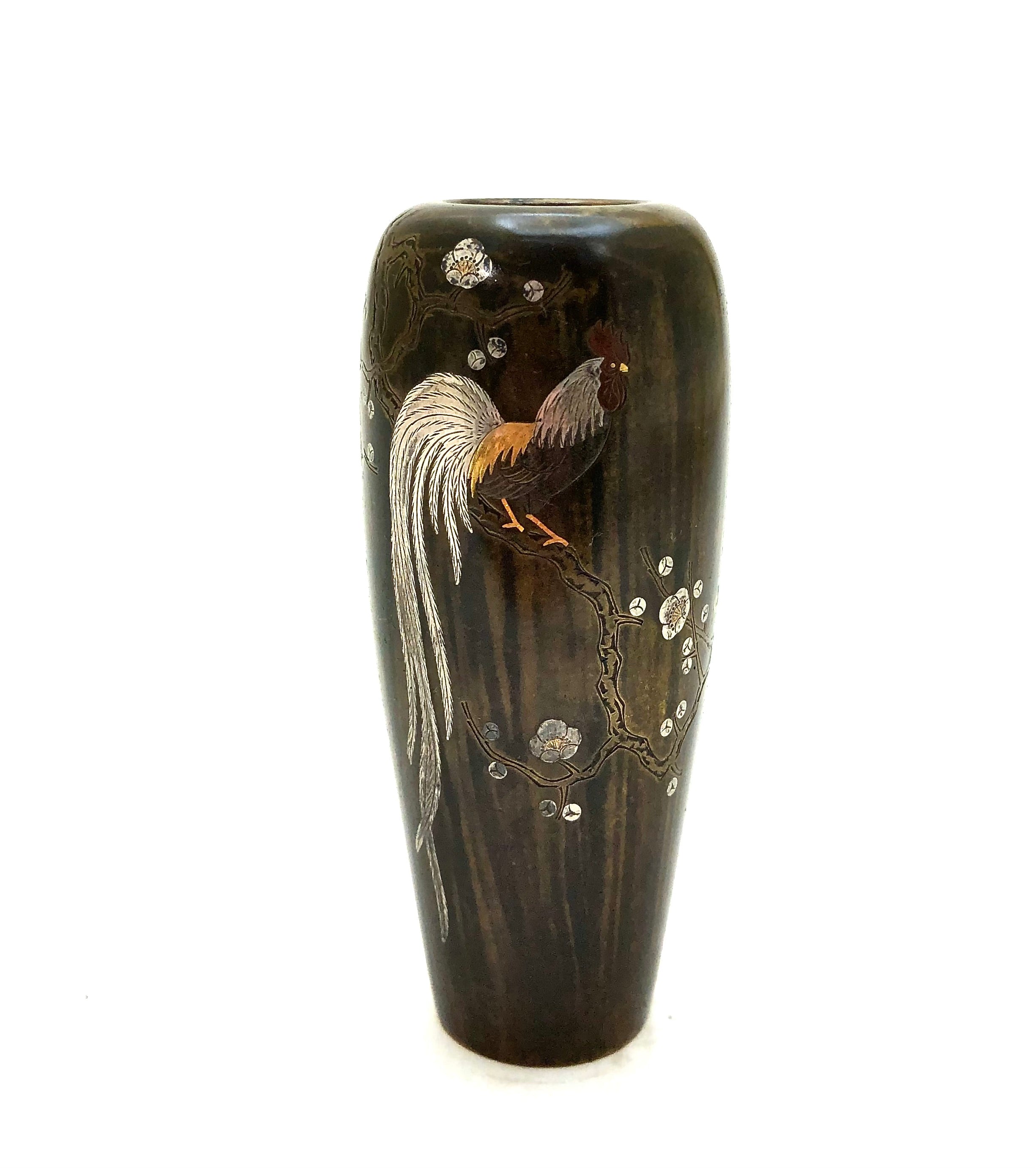
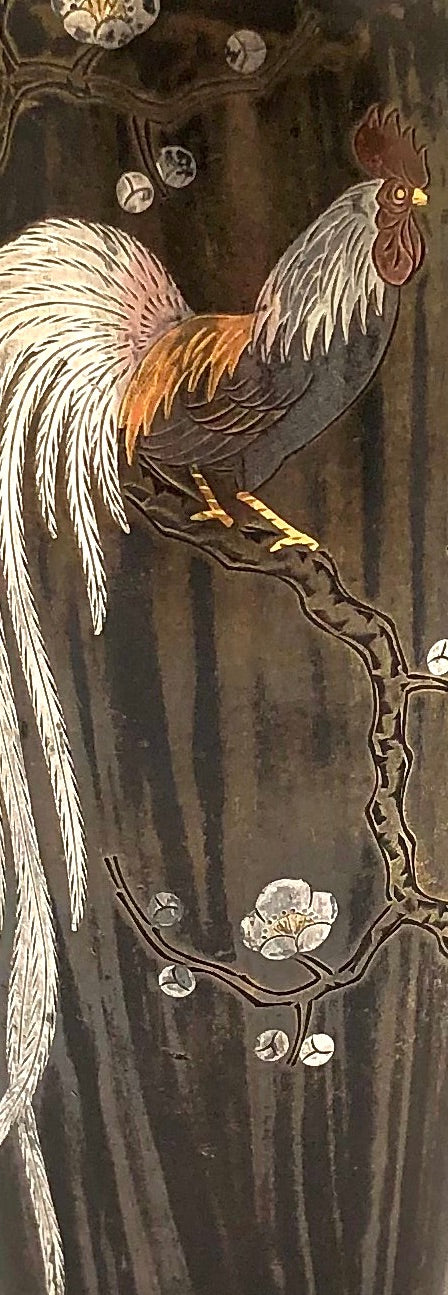
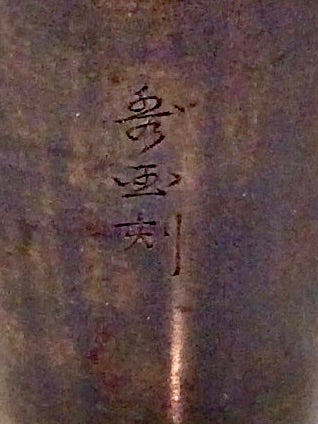
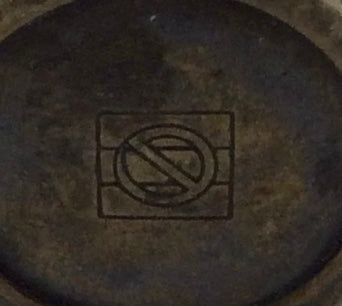
Antique Japanese Meiji Bronze and Mixed Metal Rooster, (Onagadori), Vase by Nogawa Noboru
Dimensions: 4-1/4”h x 1-5/8”dia at the shoulder.
Offered is a superb Japanese Meiji period bronze mixed metal inlay Baluster vase with rounded shoulders. The motif is of ‘Onagadori’, which is a breed of fowl originating in the Kōchi Prefecture of Japan. The Japanese government designates the breed in Kōchi as a ‘Special Natural Monument’. The vase being offered is an exceptional representation of both the male “Long-tailed rooster”, perched in a cherry blossom tree.
The coloration of this rooster motif is highlighted with copper and silver, (“iroe takazogan’, ‘hirazogan’, and ‘shishiaibori), and has a rich dark patina, and is very complementary to the contrasting bronze base. This vase was created in the Nogawa workshop during the Meiji era 1868-1912. On the bottom is a stylized workshop seal, (hiragana circle character and “No”, together No-gawa). The vase has a delicate inscription on the side translated as Nogawa Noboru.
Vintage Condition: Very good, with excellent detailing, and for a small vase it is quite heavy, with the inlay all intact, with tonal variations and oxidation. “As is” with some minor light wear to the metal surface that does not affect the design, and retains the original craft/workmanship. Any discoloration, surface wear, or structural damage is noted.
NOTE: Metalworking techniques had, of course, been brought to Japan from China and Korea even before the arrival of Buddhism. The first technology to reach Japan was that of casting bronze. Japan was fortunate enough to be blessed with rich natural resources of metals. As a result, domestic demand could be met entirely with domestic metal right up until the nineteenth century.
Metalworking involves an extraordinarily wide variety of techniques, among them, casting, forging, chasing, damascene work, and cloisonné, and most of them are still being practiced in Kyoto today. Kyoto metal Inlay, (zogan), is the generic term for the technique of inserting pieces of one or more materials into a base material, creating patterns of silver and gold, representing a multitude of motifs treasured during the period of production.
After Japan opened its doors to the west at the end of the Meiji Restoration, (1920), and with the introduction of the Dutch East Indian Trading Company, foreigners were greatly attracted by the intricate, sumptuous beauty of Japanese metal inlay. Whereas in the past, the craftsmen had applied their techniques to sword guards, they now applied them to accessories and personal effects. The most favored designs featured landscapes, fauna, images of bamboo, tigers, Mount Fuji, Cherry Blossoms, mythological subjects such as dragons, and depiction of beautiful women. It was from this period that metal inlay produced in Kyoto became known as Kyo-zogan.
Return Policy
Our antique/vintage pieces are identified/described and professionally photographed, and considered, “as is”, therefore all sales are final. Read our full refund and return policy.


